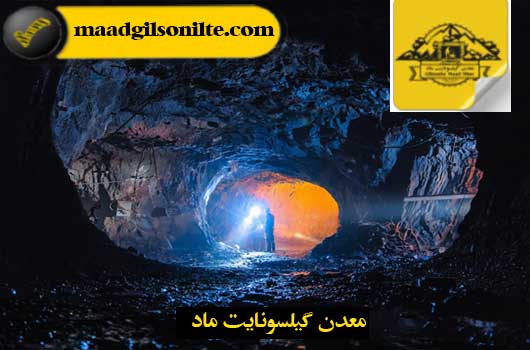
Pit in gilsonite mines: In the gilsonite mining process, the mining operation involves the digging of pits that serve as critical locations for extracting the resource. Understanding the geometric parameters of these pits is critical to optimizing mining operations, ensuring safety, and maximizing resource extraction productivity. This paper examines the importance of pit geometry in gilsonite mines, the factors that affect pit shape and size, measurement techniques for determining pit dimensions, and the implications of various pit geometries on mine operations. In addition, it discusses geotechnical considerations related to pit geometry and provides strategies for optimizing pit design and drilling techniques. The aim of this article is to improve the understanding and contribute to the development of mining methods in this industry by comprehensively examining the pit geometrical parameters in Gilsonite mines.
Gilsonite mines play an important role in extracting a unique mineral called Gilsonite. This natural, shiny black gummy rock is found in various parts of the world, including the United States. Gilsonite has a wide range of applications, from the construction industry to the production of ink, paint and asphalt. To access this valuable resource, extraction operations are carried out in specialized mines.
The gilsonite mining industry is an important sector that contributes to various sectors of the economy, including the purchase and sale of gilsonite or natural bitumen. This includes extracting minerals from underground mines and improving the extraction of natural bitumen and processing it for commercial use. The mining process involves digging pits to access Gilsonite deposits, which are then mined and processed into various forms such as powder or pellets.
Studying the geometric parameters of Gilsonite mine pits is necessary for several reasons. Understanding the shape, size, and depth of pits helps optimize mining operations and ensure efficient gilsonite extraction. It also plays a vital role in ensuring the safety and stability of the mine structure. In addition, knowledge of pit geometry helps in planning and compliance with environmental and regulatory requirements.
The geometric parameters of the pit in a gilsonite mine have a significant impact on various aspects of mining operations.
The shape and size of the pit directly affect the efficiency of gilsonite extraction. A well-designed pit allows better access to mineral deposits and maximizes yield. In addition, an optimized pit geometry enables efficient movement of mining equipment, facilitating the mining process and reducing operating costs.
The geometric parameters of the pit have a direct impact on the safety and stability of the mine. Properly designed pits ensure structural integrity and reduce the risk of collapse or accidents. The slope angles and dimensions of the pit play an important role in preventing rock fall and maintaining stability and guaranteeing the safety of workers and equipment.
Several factors are involved in the geometrical parameters of the pit in Gilsonite mines.
The geological features and composition of the deposit affect the shape and size of the pit. The distribution of gilsonite deposits, the presence of faults and surrounding rocks affect the overall geometry of the pit.
The choice of mining method and equipment affects the geometric parameters of the pit. Different methods, such as open pit or underground mining, have specific pit shapes in mud mines. The size and capabilities of the mining equipment also affect the dimensions and depth of the pit.
Environmental and regulatory considerations play an important role in determining pit geometry. Compliance with safety, environmental impact, and land reclamation regulations can affect pit shape and size.
Several measurement techniques are used to determine pit dimensions in gilsonite mines.
Traditional mapping methods, such as total station surveys and GPS measurements, are commonly used to determine the geometric parameters of the pit. These techniques include ground measurements and calculations to obtain accurate pit dimensions.
Remote sensing techniques, such as aerial photography and satellite imagery, provide valuable data for estimating sinkhole dimensions. High-resolution images taken from drones or aircraft provide a detailed overview of the pit geometry.
Advanced technologies such as 3D laser scanning and LiDAR (light detection and ranging) provide highly accurate measurements of pit dimensions. These techniques use laser beams to create accurate 3D representations of the surface of the pit, allowing accurate calculations of volume and shape.
Consequently, understanding the geometrical parameters of pits in gilsonite mines is necessary to optimize mining efficiency, ensure safety, and comply with regulations. Factors such as geological characteristics, extraction method and environmental considerations affect the geometry of the pit, and various measurement techniques help to accurately determine its dimensions.
When it comes to the shape and size of pits in gilsonite and bitumen mines, there is more than meets the eye. To truly understand these changes, statistical analysis of pit geometry data is critical. By crunching the numbers and looking for trends, we can gain insights into the factors that influence the shape and size of the pit.
Pits in bitumen or natural gilsonite mines aren’t just random holes in the ground. They often show repeating shape patterns. By identifying these common pitfalls, we can begin to uncover the secrets hidden beneath the surface. Whether a round crater looks like a giant cupcake or a rectangular crater like a misplaced swimming pool, understanding these patterns can provide valuable information about the geologic forces at work.
Pit size is important and so is volume. Quantifying changes in pit size and volume allows us to estimate the amount of precious gilsonite that can be mined. It also helps to estimate the resources required for drilling and processing. By crunching the numbers, we can paint a clearer picture of potential returns and plan accordingly.
The shape and size of a pit can have a significant impact on the efficiency of ore extraction and processing. A pit with irregular geometry may present challenges in effectively accessing and extracting gilsonite. In addition, processing techniques may need to be adjusted to account for changes in pit size and shape. Understanding these effects is critical to optimizing mining operations and maximizing productivity.
A pit is not just a hole in the ground. It is a key component of a larger mining operation. Different pit geometries can disrupt mine planning and scheduling, leading to inefficiencies and increased costs. By considering the impact of pit shape and size on these processes, mine planners can create more accurate plans and optimize resource utilization.
Different pit geometries bring different challenges and opportunities for equipment optimization. A long, narrow pit may require specialized machinery to effectively guide and mine Gilsonite. On the other hand, a wide, shallow pit may require equipment with greater capacity to handle the increased volume of material. Understanding these nuances allows mining companies to optimize their equipment selection and use.
Pit geometry plays an important role in the stability of excavation walls. Irregular shapes or steep slopes can increase the risk of slope failure and rock fall. By conducting stability assessments and designing appropriate slopes, mining companies can ensure the safety of their operations and workers.
Disposal of rock waste is considered in mining operations. Pit geometry affects the amount of waste rock produced and the methods used for disposal. Understanding the impact of pit geometry on waste rock disposal allows effective planning and implementation of environmental practices.
Changes in pit geometry can cause land deformations, such as subsidence or uplift. It is necessary to monitor these changes and implement mitigation measures for prevention
accidents, maintaining operational stability and minimizing environmental impacts. Understanding the relationship between sinkhole geometry and ground deformation helps proactive monitoring and timely mitigation.
Analysis of pit geometry should not be an afterthought. It should be an integral part of the mine planning process. By incorporating pit geometry analysis from the start, mining companies can make informed decisions and optimize their pit designs for better productivity and resource utilization.
Pit design with maximum efficiency in mind is the name of the game. Innovations in pit design, such as incorporating optimal slopes, strategic access points, and efficient haul routes, can significantly improve mine operations. Adopting these innovations can lead to higher productivity and lower costs.
Different pit geometries require different approaches to drilling. The best method for drilling in irregular or challenging pit shapes can minimize risks and improve productivity. Sharing these best practices and promoting collaboration in the mining industry can lead to more efficient and safer drilling techniques. As a result, the geometrical parameters of the pit in Gilsonite mines play an important role in optimizing mine operations and ensuring efficiency. By understanding the factors affecting pit shape and size, implementing accurate measurement techniques, and taking geotechnical considerations into account, the industry can make informed decisions about pit design and drilling techniques. By adopting strategies aimed at optimizing pit geometry, gilsonite mining operations can maximize resource extraction, improve safety and contribute to sustainable practices. By continually exploring and advancing our knowledge of pit geometry in gilsonite mines, we can strive for continuous improvement and innovation in this important industry.
Understanding pit geometry is very important in gilsonite mining because it directly affects resource extraction efficiency. By analyzing the shape and size of pits, mining operations can optimize drilling techniques, improve safety, and increase overall productivity.
Several factors affect pit geometry in gilsonite mines, including the geological characteristics and composition of the deposit, the chosen mining method, and environmental and regulatory considerations. These factors contribute to changes in pit shape and size and must be considered during mining operations.
Pit dimensions in gilsonite mines can be measured using various techniques. Traditional mapping methods, remote sensing technologies such as aerial imaging, and advanced techniques such as 3D laser scanning and LiDAR are commonly used to accurately determine pit dimensions and analyze geometric parameters.

